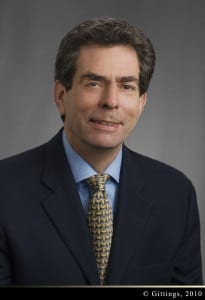
Zach Galifianakis’ “Between Two Ferns” is killing it on www.funnyordie.com. Other than perhaps Justin Bieber, most of the “guests” are onto Galifianakis’ gambit. Even President Obama prepared well for the jousts and avoided an on-camera meltdown, aka a “viral goof.”
In the relatively normal world of business and consumer media, meltdowns, or severe verbal gaffes are relatively rare.
When they occur, they are unfortunately magnified, quickly go viral and almost always have consequences.
When BP CEO Tony Hayward pleaded, “I want my life back” during the height of the 2010 oil-spill disaster, he became the butt of late night comics, politicians and the general public. Former Cadbury President of North America Brad Irwin had a classic media flameout during a CNBC interview when he dismissed a question that he clearly knew enough information to discuss.
True, on-camera meltdowns are rare, when a guest or spokesperson is so rattled that he or she walks off the set or admits a goof.
More common are dumb utterances or mistakes that are the result of poor planning and preparation.
These gaffes result in embarrassment, viral mockery and a loss of reputation.
We like to tell clients, if you want a perfect interview, advertise your message or create great content for your website. A live encounter, by its very nature, is based on the unpredictable. If real estate’s rule is location, location, location, the media interview rule is preparation, preparation, preparation.
1. Study the program and the interviewer. Before accepting an on-camera interview, analyze the program, how the host or reporter ask questions, the type of audience and the show’s track record for treating guests fairly. There is no rule saying you have to go on a program when you don’t want to appear with other guests or anticipate an unfair line of questioning.
2. Prepare messages and other media for the agreed upon topic. Messages of facts are fine, but always have at least one sound bite or story to tell. Have your team submit infographics and B-roll. More often than not, the show will use the material.
3. Prepare for the off-topic questions that are likely to come up. For example, any General Motors spokesperson who is appearing on a news program to promote a new car or discuss financial results had better be ready for at least one question regarding GM’s expanding its ignition switch recall.
Even when a reporter knows that you are not authorized to speak or not the proper subject matter expert (SME), there are two reasons she will still ask at least one question on the subject.
First, it’s a legitimate question for anyone representing the company. Second, the reporter might get lucky and the spokesperson might blurt out some information that alters the line of questioning.
A spokesperson should be ready with one prepared answer and bridge to the agreed upon topic.
4. Know how to handle difficult questions. Learn how to acknowledge off-topic questions, if not actually answer them, and then bridge to your positive answer on the subject. I break down bridging into two types of questions: one is the question you must answer; the other is a question that doesn’t have to be answered, as asked.
For example, if a pharmaceutical company is introducing a new drug that has the same effectiveness in lower blood pressure as existing drugs but has either a better side effect profile than other medicines, you might need to acknowledge a question.
Almost all reporters will respect an answer when you say, “That’s proprietary” or “I would prefer not to speculate.” Each of those answers allows you to pivot to what you can answer.
5. Simulate the interview. There is no substitute for videotaped rehearsals, including playback and critique, to help mitigate the chance for an on-camera gaffe. When we prep a government official for an interview on “60 Minutes” “Morning Joe,” or any show, we simulate the reporter and the way he or she asks questions.
True media meltdowns are rare. Mistakes are quite common. Proper preparation and rehearsal are the best ways to avoid them.
CONTACT:
Andrew Gilman is president-CEO of CommCore Consulting. He can be reached at [email protected].
This article originally appeared in the April 7, 2014 issue of PR News. Read more subscriber-only content by becoming a PR News subscriber today.
